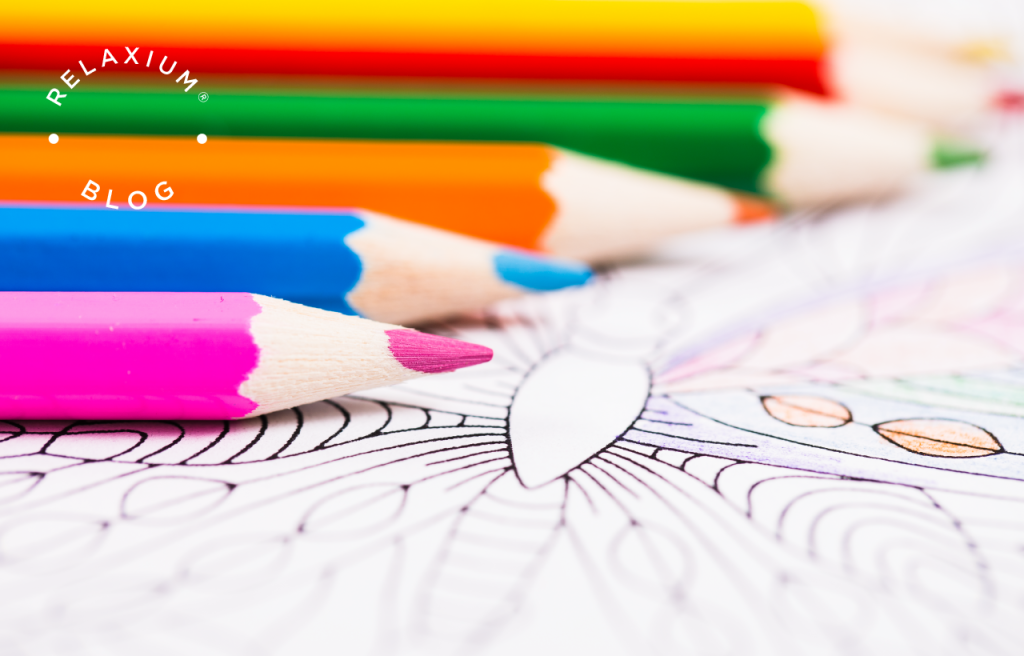Stress is unfortunately an inevitable part of life. It happens to all of us, and often impacts both our physical and mental well-being. In our quest for a stress-free life, individuals often turn to different methods and techniques. These typically include exercise, meditation, or therapy. However, one often overlooked resource for stress relief is the power of art. Specifically, the use of color in art has been found to have a profound effect on our emotions and overall well-being. In this blog, we will discover the transformative power of coloring as a means to alleviate stress and find solace in the healing embrace of art.
The Psychology of Color
Colors have the unique ability to evoke specific emotions and moods within us. This phenomenon, referred to as color psychology, has been studied extensively and can be utilized for stress relief. Certain colors have been found to have a calming and soothing effect on the mind, such as blues and greens, while others have been found to help energize and uplift, like yellows and oranges. According to Color Psychology, colors can have numerous associations with them. Examples include red being associated with energy, strength, and power, orange being associated with joy, sunshine, and creativity, and pink standing for tenderness, vulnerability, and youth.
Art Therapy & Stress Relief
Art has long been recognized as a powerful form of self-expression, and also a means to release any pent-up emotions. Engaging in creative activities allows us to tap into our self, express our thoughts and feelings, and find solace in the process! Through art, we are able to channel our stress and transform it into something meaningful. Whether that’s painting, drawing, or sculpting, art provides us with a safe space for emotional release and healing.
Art therapy is a therapeutic approach that utilizes art to enhance emotional well-being and personal growth. Color is an integral part of therapy, as it can significantly impact our emotions. Art therapists carefully choose and guide individuals in specific colors to evoke the desired emotional response. For example, cool colors like blues and purples are often used to promote relaxation and reduce anxiety, while warmer colors like reds and oranges can stimulate creativity and self-confidence. While the impact of color therapy is great, it is still a relatively new process that needs more research to prove its effectiveness.
Techniques for Using Color in Art Therapy
There are various techniques used to explore different colors with art therapy. One technique is color mapping, where individuals are assigned colors to their emotions, thoughts, or experiences. Another technique is creating color collages, composed of various materials and colors. This offers an expressive outlet for individuals. It’s also vital that individuals explore different colors and their associations, experimenting with color combinations, and reflecting on which emotions are evoked.
Creating Your Own Colorful Stress Relief Routine
Creating a personalized stress relief routine that incorporates art and color can be a transformative experience! Here are some tips to help you establish your own stress relief routine:
Designate a dedicated art space: Set aside a corner of your home or a specific room as your creative oasis. Having a dedicated space for art allows you to immerse yourself in the process, without any distractions.
Set regular time aside for artistic expression: Schedule dedicated time for engaging in artistic activities. It could be a few minutes each day or longer sessions a few times a week. Consistency is vital for establishing a habit and reaping the benefits of art for stress relief.
Experiment with color combinations: It’s important to explore different color combinations and palettes that resonate with you. Pay attention to how different colors make you feel, and choose hues that promote relaxation, calmness, or inspiration. Consider warm colors like reds and yellows for energizing effects or cool colors like blues and purples for soothing effects.
Try various art forms: Don’t limit yourself to just one art form! Experiment with painting, drawing, collages, or any other creative medium that appeals to you. Each art form offers unique opportunities for self-expression and stress relief.
Join art classes or workshops: Consider joining art classes or workshops, either in person or online. These settings provide valuable guidance from experienced instructors and opportunities to connect with like-minded people. Sharing your artistic journey with others can be motivating!
Remember, there is no right or wrong way to create your own stress relief routine. The key is finding what resonates and works best for you and your lifestyle!
Relaxium Calm
At Relaxium, we understand the importance of stress relief and overall well-being. While color therapy and artistic expression can be effective tools for relaxation, we also recognize that sometimes you may need additional support!
If you feel like you are looking for extra help in managing your stress, consider trying Relaxium Calm. Relaxium Calm promotes a sense of relaxation and tranquility, using carefully selected ingredients. It has been designed to promote relaxation, reduce stress levels, and supply vital nutrients to the body. By incorporating Relaxium Calm into your daily routine alongside color therapy, you can enhance your stress relief efforts and experience a greater sense of calm and balance.
Interested in trying Relaxium Calm Gummies? You can get it for 30% off when you use promo code 30OFFBLG at checkout!
At Relaxium, we have a simple mission in mind – to create affordable, safe, and effective supplements. Through extensive research, we created four life enhancing supplements: Relaxium Sleep, Relaxium Calm, Relaxium Immune Defense, and Relaxium Focus Max. We use a perfect synergistic blend of ingredients in our products to ensure results. If you are interested in trying our Relaxium products, click here for more information!
To restful and healthy days ahead,
The Relaxium Team
*These statements have not been evaluated by the Food & Drug Administration. This product is not intended to diagnose, treat, cure, or prevent any disease.
Sources:

